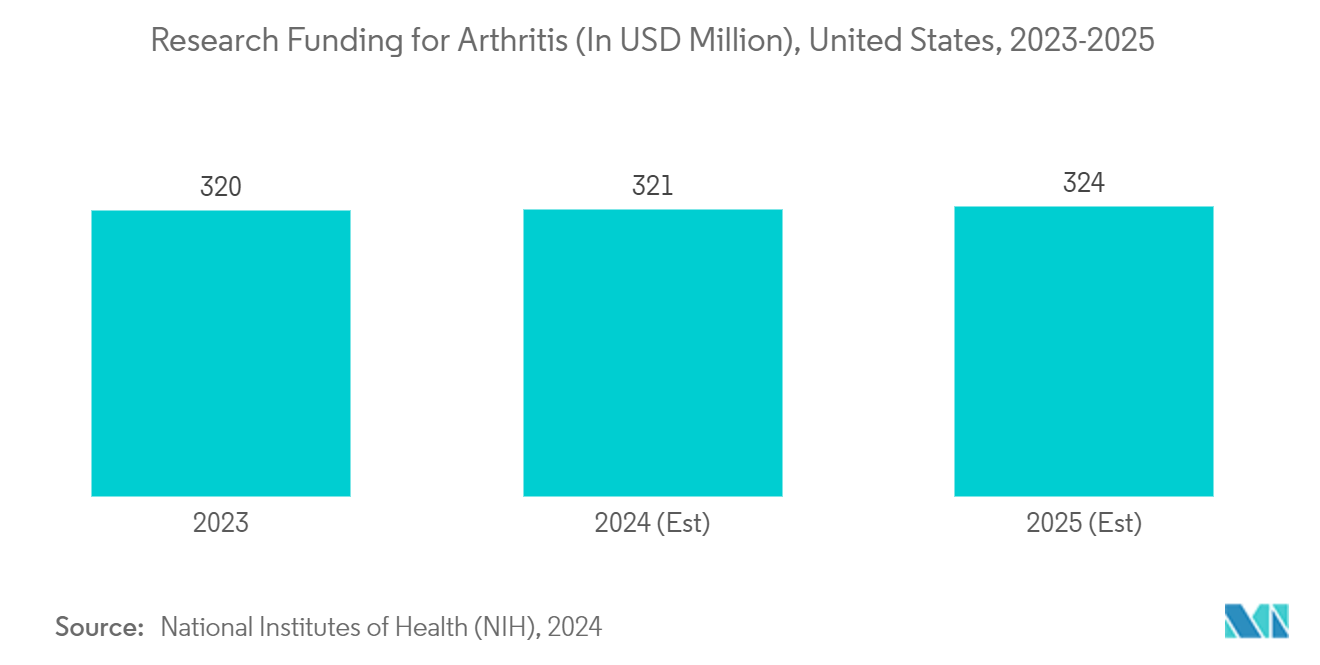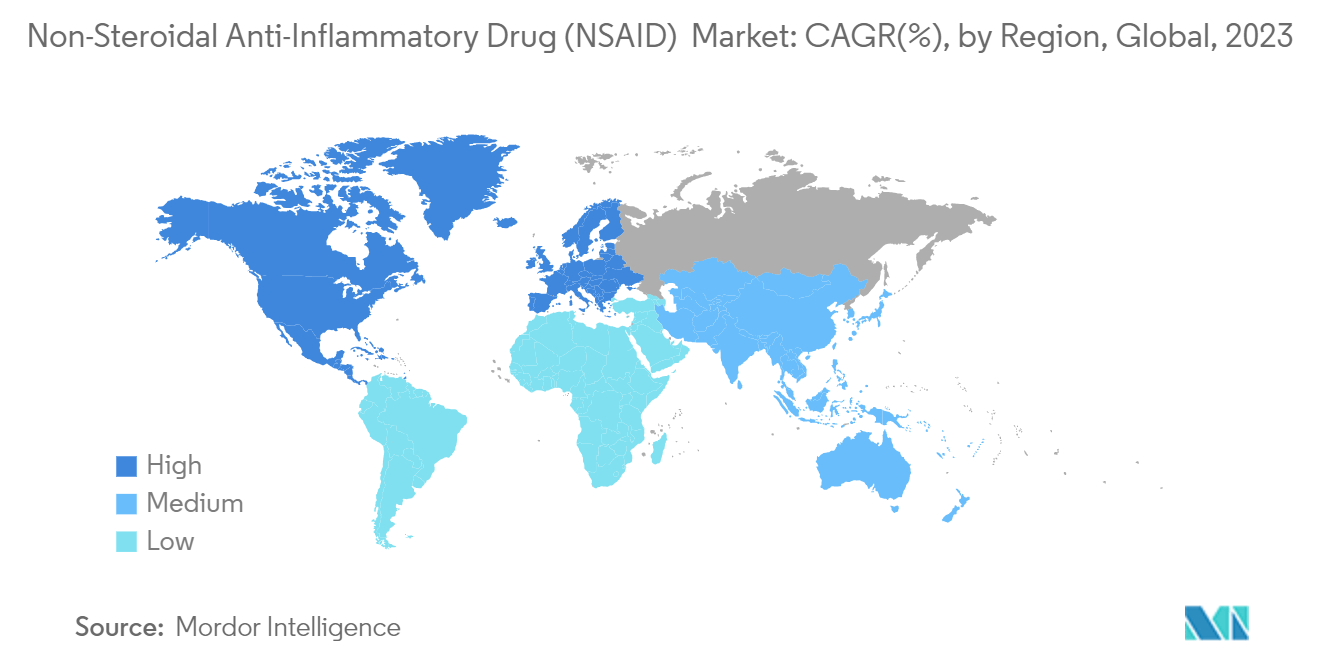Market Trends of Non-steroidal Anti-Inflammatory Drugs (NSAIDs) Industry
The Arthritis Segment is Expected to Grow Faster and Dominate the Market During the Forecast Period
Arthritis is a health condition that encompasses various conditions characterized by inflammation of the joints. It can lead to pain, swelling, stiffness, and reduced joint mobility. The market for non-steroidal anti-inflammatory drugs (NSAIDs) is expected to grow due to the increasing incidence of arthritis, as these drugs are commonly used in patients with chronic inflammatory arthritis. NSAIDs effectively reduce inflammation and pain due to their ability to inhibit prostaglandins' biosynthesis at the cyclooxygenase enzyme level.
The arthritis segment is expected to hold a significant share during the forecast period due to the high burden of arthritis among the population and the increasing demand for effective pain management drugs, including NSAIDs. For instance, according to the data published by the Australian Bureau of Statistics in December 2023, 3.7 million cases were reported in 2022 in Australia, which includes 57% of osteoarthritis, 13.9% of rheumatoid arthritis, and 37.3% of other arthritis types. This shows that the rising prevalence of arthritis will likely increase the usage of NSAIDs and boost segment growth during the study period.
Severe arthritis can limit physical activity and is directly associated with obesity, cardiovascular disease, diabetes, and other functional limitations. The older population's increased susceptibility to arthritis due to age-related decline in bone density and weak joint ligaments is also expected to contribute to segment expansion.
Several NSAID drugs are available in the market, with more being approved to meet the growing demand for arthritis pain management, contributing to segment growth. For instance, in March 2024, Endo International PLC and Par Pharmaceutical Inc. launched ibuprofen-famotidine 800 mg/26.6 mg tablets, a generic version of Amgen's DUEXIS. This combination medication is used to relieve the signs and symptoms of arthritis while decreasing the risk of developing ulcers in the stomach. Thus, the factors mentioned above are expected to increase the demand for NSAIDS for arthritis and are likely to drive the growth of the segment during the forecast period.

North America is Expected to Hold a Significant Share in the Market During the Forecast Period
North America is poised to dominate the NSAID (non-steroidal anti-inflammatory drugs) market, holding a significant share during the forecast period. The increasing demand for effective drugs for pain relief and growing awareness among the North American population are key factors driving the market's growth in this region. In addition, North America, particularly the United States and Canada, has a significant aging population. As people age, the prevalence of chronic conditions such as arthritis, which often require NSAIDs for pain and inflammation management, increases. This demographic shift drives demand for NSAIDs.
Chronic pain-causing disorders such as migraine are prevalent among the North American population, which is expected to drive the market. For example, according to data published by the Ministry of Health in Mexico in September 2023, it was reported that in 2022, 20 million people suffered from migraine, which is one of the most common disabling diseases in Mexico. This demonstrates the high prevalence of migraines, leading to an increased demand for NSAIDs for pain management, thus driving market growth in the region during the study period.
Market players in North America continuously focus on strategic activities such as increasing the production of NSAIDs and product approvals to tackle the pain of various conditions. For instance, in November 2023, Scilex Holding Company planned to increase the manufacturing of ELYXYB (celecoxib oral solution) to meet its rising demand and increased stocking needs in its distribution center. These activities increase the availability of NSAIDs, which is expected to boost the region's market growth during the forecast period.
Therefore, the high burden of pain conditions, along with the market player strategies, is likely to increase the usage of NSAIDs, and the segment is expected to grow significantly during the forecast period.



